The Science Behind Semaglutide and Weight Loss
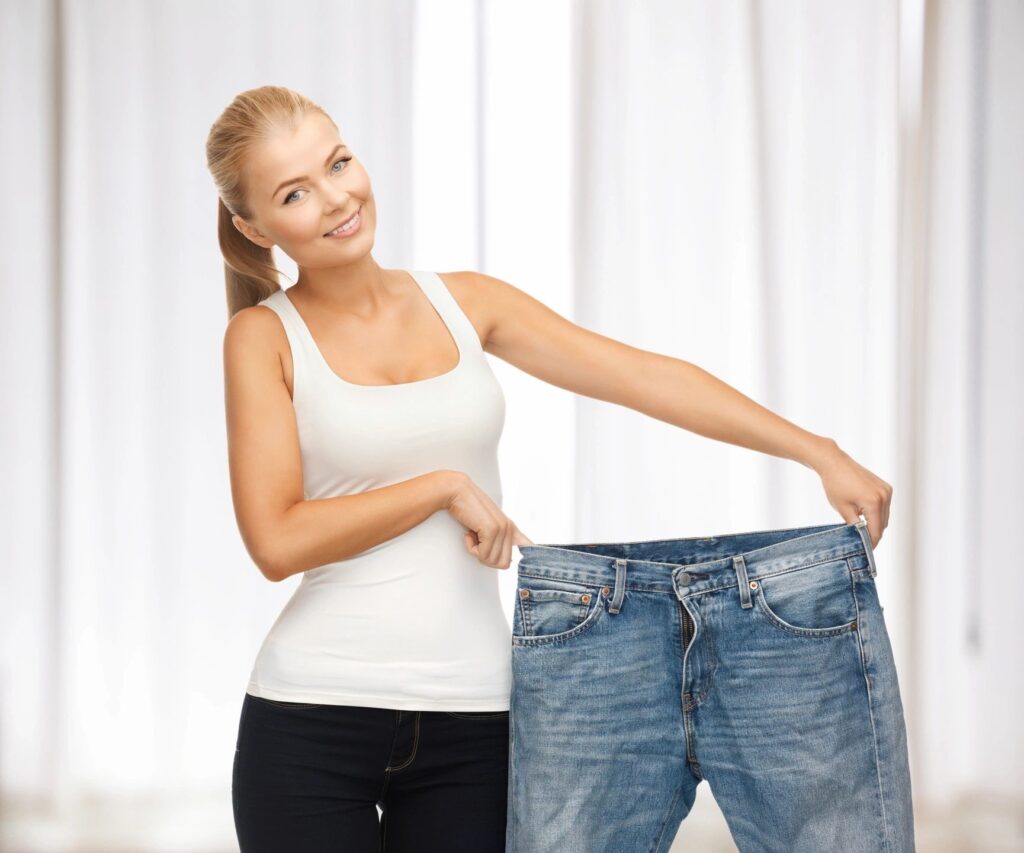
Introduction: Unlocking the Weight Loss Enigma with Semaglutide at Newest Beginnings Med Spa In the realm of medical breakthroughs, an unexpected player emerges in the weight loss arena: Semaglutide. This groundbreaking medication, traditionally recognized for its role in managing diabetes, has recently taken the spotlight for an unforeseen benefit—remarkable weight loss. At Newest Beginnings Med Spa, where the pursuit of optimal well-being meets innovative solutions, the connection between Semaglutide and weight loss is a subject of keen interest and exploration. This blog explores the science behind the surprising link between Semaglutide and weight loss. As we delve into the intricate mechanisms that make Semaglutide a potential game-changer in weight management, we aim to provide you with a comprehensive understanding of this phenomenon. Whether you’re intrigued by the scientific intricacies, seeking testimonials from real individuals who’ve experienced the transformation, or contemplating the integration of Semaglutide into your wellness journey, this blog aims to be your guiding beacon. Join us as we navigate Semaglutide, unveil the unexpected synergy between this medication and weight loss, and discover how Newest Beginnings Med Spa is at the forefront of personalized solutions for a healthier, happier you. Understanding Semaglutide Definition and Purpose At the heart of the Semaglutide phenomenon lies a medication that has traditionally been harnessed to address diabetes. Semaglutide belongs to the glucagon-like peptide-1 (GLP-1) receptor agonists, designed to mimic the actions of naturally occurring incretin hormones in the body. Originally developed to regulate blood sugar levels in individuals with diabetes, Semaglutide has emerged as an unexpected ally in the pursuit of weight loss. Overview of Medical Uses Before delving into its role in weight management, it’s crucial to appreciate Semaglutide’s primary functions. By stimulating the release of insulin and inhibiting glucagon—a hormone that raises blood sugar levels—Semaglutide aids in stabilizing blood glucose levels in individuals with type 2 diabetes. Its effectiveness in diabetes management has made it a staple in the medical community, contributing to improved glycemic control for countless patients. How Semaglutide Works in the Body To comprehend the weight loss revelations associated with Semaglutide, it’s essential to grasp the medication’s mechanisms within the body. Semaglutide primarily influences the GLP-1 receptor, triggering a cascade of physiological responses. These include the stimulation of insulin production, slowing down of stomach emptying, and a reduction in appetite. The intricate dance between Semaglutide and the body’s natural processes forms the foundation for its unexpected impact on weight. The Weight Loss Revelation Uncovering the Unexpected Connection While Semaglutide’s primary role in diabetes management has been long-established, the revelation of its significant impact on weight loss has surprised the medical community and individuals seeking effective weight management solutions. The turning point came through extensive clinical trials and studies that consistently demonstrated a notable reduction in body weight among participants using Semaglutide. Overview of Clinical Trials and Studies The scientific community’s interest in Semaglutide’s potential as a weight loss aid intensified with the outcomes of rigorous clinical trials. These studies systematically evaluated the medication’s effects on individuals with and without diabetes, revealing a consistent trend of substantial weight loss. Understanding the methodology and findings of these trials provides valuable insights into the reliability and efficacy of Semaglutide as a weight management solution. The Science Behind Semaglutide and Weight Loss Exploring the Physiological Mechanisms Now that we’ve established the surprising connection between Semaglutide and weight loss, let’s delve into the intricate science that underpins this phenomenon. Understanding how Semaglutide induces weight loss involves a closer look at the physiological mechanisms it engages within the body. Impact on Appetite Regulation and Satiety One of the key contributors to Semaglutide’s weight loss effects lies in its ability to modulate appetite. By interacting with the GLP-1 receptor, Semaglutide helps regulate the brain’s perception of hunger and fullness. This reduces appetite, making it easier for individuals to adhere to healthier eating habits and caloric restrictions. We’ll explore how this appetite-modulating effect distinguishes Semaglutide as a unique player in weight management. Metabolic Changes Induced by Semaglutide Beyond its impact on appetite, Semaglutide also instigates metabolic changes that contribute to weight loss. The medication promotes a slowdown in stomach emptying, increasing feelings of fullness after meals. Additionally, it may enhance the body’s sensitivity to insulin, influencing how it processes and utilizes glucose. These metabolic shifts play a pivotal role in the overall effectiveness of Semaglutide as a weight-loss solution. Semaglutide as a Weight-Loss Solution Comparison with Other Weight Loss Methods Semaglutide stands out as a distinctive solution in the weight management landscape, challenging conventional approaches. This section will explore how Semaglutide compares to other weight loss methods. Whether juxtaposed against dietary interventions, exercise regimens, or other pharmaceutical interventions, understanding how Semaglutide fits into the broader spectrum of weight loss strategies is crucial for individuals contemplating their options. Potential Benefits and Drawbacks As with any medical intervention, weighing the potential benefits against possible drawbacks is important. Semaglutide’s dual role in managing diabetes and promoting weight loss introduces a range of advantages, from improved glycemic control to notable reductions in body weight. However, we’ll also delve into potential drawbacks and considerations, ensuring a balanced and informed perspective on the implications of incorporating Semaglutide into a weight loss journey. Addressing Safety Concerns and Considerations Safety is paramount in any medical treatment, and Semaglutide is no exception. We’ll explore the safety profile of Semaglutide, addressing common concerns and considerations. This includes examining potential side effects, contraindications, and the importance of medical supervision when embarking on a Semaglutide-assisted weight loss program. Newest Beginnings Med Spa’s commitment to prioritizing the well-being and safety of individuals seeking their expertise in this journey will be highlighted. Personalized Approach at Newest Beginnings Med Spa How Newest Beginnings Med Spa Integrates Semaglutide into Weight Loss Programs At Newest Beginnings Med Spa, the marriage of cutting-edge science and personalized care takes center stage. Semaglutide isn’t just a standalone solution; it’s seamlessly integrated into comprehensive weight loss programs crafted to meet individual needs. Expert Insights and Guidance Newest Beginnings Med Spa’s team of experts plays a pivotal
PRF Hair Treatment: Transforming Your Hair Journey
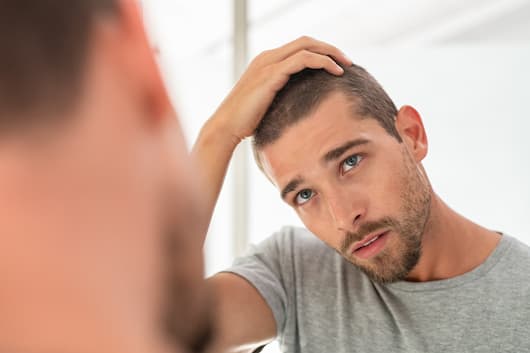
Introduction Hair loss is a common concern affecting millions of individuals worldwide, leading to a quest for effective treatments. PRF (Platelet-Rich Fibrin) hair treatment has emerged as a promising solution, offering hope to those struggling with thinning hair and baldness. This article delves into the intricacies of PRF hair treatment, exploring its benefits, procedures, and the science behind its success. We aim to provide a comprehensive guide to understanding PRF, its application, and its impact on your hair journey. What is PRF Hair Treatment? Definition of PRF (Platelet-Rich Fibrin): PRF is a concentration of platelets and fibrin derived from the patient’s own blood. It is known for its regenerative properties and is increasingly used in various medical fields, including hair restoration. Difference between PRP and PRF: While both PRP (Platelet-Rich Plasma) and PRF are used in regenerative medicine, PRF is considered superior due to its slower release of growth factors and lack of additives. This makes PRF more effective in promoting tissue healing and regeneration. History and development of PRF in hair treatment: PRF was initially used in dentistry and orthopedics for its healing properties. Over time, its application extended to aesthetic medicine, including hair restoration, thanks to its ability to stimulate hair growth and improve hair density. The Science Behind PRF Biological mechanisms of PRF: PRF works by harnessing the body’s natural healing processes. It contains high concentrations of platelets and fibrin, which release growth factors essential for tissue regeneration and healing. Role of platelets and fibrin in hair growth: Platelets are rich in growth factors that promote cell proliferation, collagen production, and angiogenesis. Fibrin acts as a scaffold, supporting the sustained release of these growth factors and enhancing their effectiveness. How PRF stimulates hair follicles: When injected into the scalp, PRF stimulates the dormant hair follicles, enhancing their growth phase. This leads to increased hair thickness and density over time. Types and Categories of Hair Loss Androgenetic alopecia: Commonly known as male or female pattern baldness, this type of hair loss is genetic and hormonal. Alopecia areata: An autoimmune disorder that causes patchy hair loss. Telogen effluvium: A temporary form of hair loss triggered by stress, illness, or hormonal changes. Traction alopecia: Hair loss caused by repetitive tension on the hair, often from tight hairstyles. Scarring alopecia: Permanent hair loss resulting from inflammatory skin conditions or physical trauma to the scalp. Symptoms and Signs of Hair Loss Common signs of hair thinning: Gradual thinning on the top of the head, receding hairline, and widening part. Patterns of baldness: Circular or patchy bald spots, diffuse thinning, and complete baldness in some areas. Early indicators to watch for: Increased hair shedding, visible scalp, and reduced hair volume. Causes and Risk Factors for Hair Loss Genetic predisposition: Family history plays a significant role in hair loss patterns. Hormonal changes: Conditions like pregnancy, menopause, and thyroid disorders can impact hair health. Environmental factors: Pollution, UV exposure, and harsh hair treatments can contribute to hair loss. Lifestyle influences: Poor diet, smoking, and excessive alcohol consumption can weaken hair follicles. Medical conditions: Diseases such as lupus, diabetes, and scalp infections can lead to hair loss. Diagnosing Hair Loss Clinical examination: A thorough scalp examination by a dermatologist or trichologist. Medical history review: Understanding the patient’s health background and potential triggers. Diagnostic tests (scalp biopsy, blood tests): To rule out underlying medical conditions and confirm the type of hair loss. Importance of early diagnosis: Early intervention can prevent further hair loss and improve treatment outcomes. PRF Hair Treatment Procedure Preparing for the treatment: Consultation with a specialist to assess suitability and set realistic expectations. Step-by-step process: Blood draw from the patient. Centrifugation to separate PRF from the blood. Injection of PRF into the scalp. Post-treatment care: Avoiding strenuous activities, protecting the scalp, and following a prescribed hair care routine. Expected outcomes and timeline: Gradual improvement in hair thickness and density, with visible results typically seen within 3-6 months. Benefits of PRF Hair Treatment Natural and non-surgical approach: Utilizes the patient’s own blood, reducing the risk of allergic reactions and infections. Enhanced hair density and volume: PRF promotes the growth of new hair and strengthens existing hair. Long-lasting results: Patients often enjoy sustained improvement in hair quality and density. Minimal side effects: Common side effects include mild swelling and redness, which usually resolve quickly. Challenges and Limitations of PRF Not suitable for all types of hair loss: PRF is most effective for androgenetic alopecia and other non-scarring types of hair loss. Variability in patient response: Individual results can vary based on the extent of hair loss and overall health. Cost considerations: PRF treatment can be expensive, and multiple sessions may be required. Preventive Measures for Hair Loss Healthy diet and nutrition: Eating a balanced diet rich in vitamins and minerals supports hair health. Stress management techniques: Practices like meditation, yoga, and regular exercise can reduce stress-related hair loss. Proper hair care routines: Using gentle hair care products and avoiding excessive heat styling. Avoiding harmful styling practices: Steering clear of tight hairstyles and chemical treatments that damage hair. Personal Stories and Case Studies Success stories of PRF treatment: Many individuals have experienced significant improvement in hair growth and density. Testimonials from patients: Positive feedback from patients highlights the effectiveness of PRF treatment. Before and after photos: Visual evidence of the transformative impact of PRF on hair health. Expert Insights Interviews with dermatologists and trichologists: Medical professionals share their insights on PRF treatment. Professional opinions on PRF efficacy: Experts discuss the benefits and potential of PRF in hair restoration. Future prospects in hair loss treatments: Innovations and advancements that could enhance the effectiveness of PRF.
Comparing Med Spas and Day Spas: Unveiling Differences
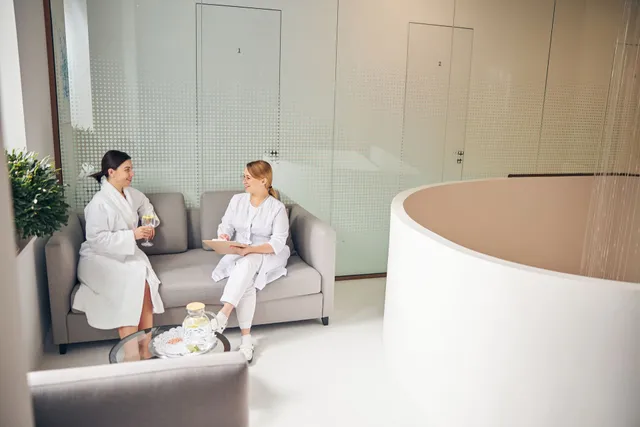
Comparing Med Spas and Day Spas: What Sets Them Apart? When it comes to pampering and self-care, spas are a go-to destination for many. However, not all spas are created equal. The two main types of spas you’ll encounter are med spas (medical spas) and day spas. While both offer a range of services designed to improve your well-being and appearance, they differ significantly in their approach and offerings. Let’s dive into the key differences between med spas and day spas. What is a Med Spa? Services Offered at a Med Spa Med spas combine the relaxing environment of a traditional spa with advanced medical treatments. These facilities offer a range of medical-grade procedures such as Botox, dermal fillers, laser treatments, and chemical peels. Med spas also often provide skin rejuvenation and anti-aging treatments, which are typically overseen by licensed healthcare professionals. Staff at a Med Spa The staff at a med spa usually includes licensed medical professionals such as doctors, nurse practitioners, and medical aestheticians. These professionals ensure that all treatments are performed safely and effectively. The presence of a medical director is common, ensuring that the procedures adhere to medical standards. Equipment and Procedures Med spas utilize advanced medical equipment to perform their treatments. This equipment is often more sophisticated and capable of delivering more invasive procedures compared to what you’d find at a day spa. The treatments at a med spa can have a longer-lasting impact on your appearance, thanks to the medical-grade products and technologies used. Purpose of a Med Spa The primary goal of a med spa is to improve your aesthetic appearance through scientifically backed treatments. In addition to cosmetic enhancements, some med spas offer wellness services like hormone therapy and weight management programs. The combination of medical expertise and spa-like relaxation provides a comprehensive approach to beauty and wellness. What is a Day Spa? Services Offered at a Day Spa Day spas focus on providing non-medical treatments designed to help you relax and rejuvenate. Common services include massages, facials, body wraps, and manicures/pedicures. These treatments are aimed at enhancing your overall well-being and providing a luxurious experience. Staff at a Day Spa The staff at a day spa consists of licensed massage therapists, aestheticians, and beauty professionals. Unlike med spas, day spas do not require medical oversight, as their treatments are non-invasive and primarily focused on relaxation and beauty. Equipment and Procedures Day spas use standard spa equipment for their treatments. The procedures are designed to be soothing and stress-relieving, utilizing products and techniques that promote relaxation and beautification without the need for medical intervention. Purpose of a Day Spa The main purpose of a day spa is to provide a serene environment where clients can unwind and escape from the stresses of everyday life. Treatments are centered around relaxation, stress relief, and beautification, making day spas ideal for a quick getaway or a special treat. Key Differences Between Med Spas and Day Spas While both med spas and day spas aim to improve your well-being, they do so in different ways: Services: Med spas offer medical-grade treatments while day spas provide non-medical, relaxation-focused services. Staff: Med spas have licensed medical professionals; day spas employ beauty and wellness practitioners without medical oversight. Equipment: Med spas use advanced medical equipment for more invasive procedures; day spas use standard spa tools for non-invasive treatments. Purpose: Med spas focus on aesthetic enhancement and medical wellness; day spas emphasize relaxation, stress relief, and beautification. Which One is Right for You? Choosing between a med spa and a day spa depends on your personal goals and needs. If you’re looking for advanced treatments to address specific aesthetic concerns, a med spa may be the right choice. On the other hand, if you seek a peaceful retreat to relax and pamper yourself, a day spa is likely the better option. In conclusion, both med spas and day spas offer unique benefits. Understanding the differences can help you make an informed decision and choose the type of spa that best suits your needs and preferences. Whether you opt for the medical expertise of a med spa or the tranquil environment of a day spa, you’re sure to enjoy a rejuvenating experience. 4o
Top Laser Hair Removal Tips for First-Time Patients
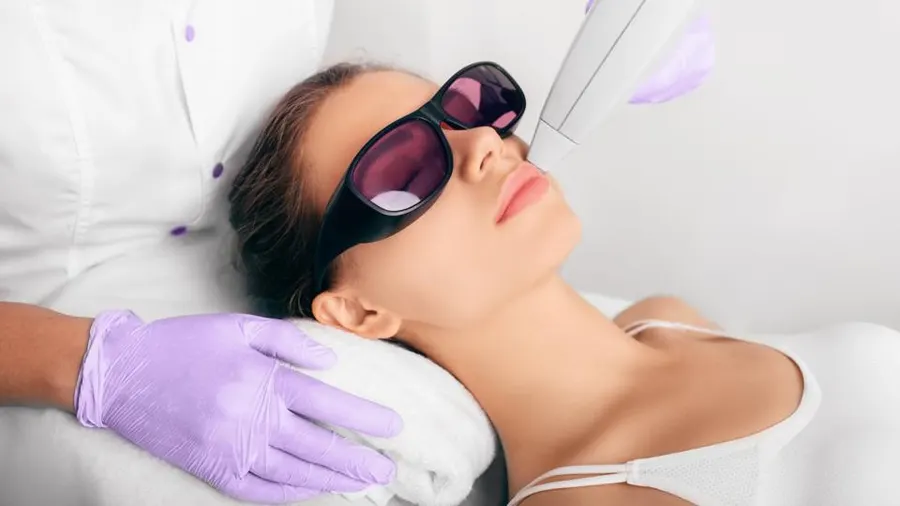
Pre-Treatment Tips 1. Choose a Reputable Clinic Research: Look for clinics with certified and experienced practitioners. Reviews: Read testimonials and reviews from previous clients. Consultation: Schedule a consultation to discuss your needs and expectations. 2. Understand Your Skin and Hair Type Suitability: Laser hair removal is most effective on light skin with dark hair, but newer technologies can treat various skin tones and hair colors. Professional Assessment: Get assessed by a professional to determine the best laser type for you. 3. Avoid Sun Exposure Tanning: Avoid sunbathing and tanning beds for at least four weeks before the treatment. Sunblock: Use a broad-spectrum sunscreen with SPF 30 or higher if sun exposure is unavoidable. 4. Stop Certain Hair Removal Methods Waxing and Plucking: Refrain from waxing, plucking, or threading the area for at least four to six weeks before your treatment. Shaving is allowed. Bleaching: Avoid bleaching the hair as the laser targets the pigment in the hair. 5. Shave Before Treatment Preparation: Shave the treatment area 24-48 hours before your appointment. This allows the laser to focus on the hair follicle beneath the skin. 6. Avoid Certain Products Skin Care: Avoid using creams, lotions, and deodorants on the day of your treatment. Your skin should be clean and free of any products. Medications: Inform your practitioner about any medications you are taking, especially photosensitizing drugs. During Treatment Tips 1. Expect Mild Discomfort Sensation: The procedure might feel like a rubber band snapping against your skin. Pain levels vary but are generally tolerable. Pain Relief: Ask about numbing creams or cooling devices that can be used to minimize discomfort. 2. Protective Gear Eye Protection: You will be given protective eyewear to shield your eyes from the laser light. Ensure it fits properly and is worn throughout the session. Post-Treatment Tips 1. Manage Side Effects Common Reactions: Redness and swelling are normal and should subside within a few hours to a couple of days. Cool Compresses: Apply ice packs or cool compresses to soothe the treated area. 2. Avoid Sun Exposure Protection: Continue to avoid direct sun exposure and use a high-SPF sunscreen to protect the treated area. Healing: Sun exposure can lead to complications like hyperpigmentation. 3. Skip Certain Activities Heat: Avoid hot showers, saunas, and strenuous exercise for 24-48 hours post-treatment to prevent irritation. Scrubbing: Do not scrub or exfoliate the treated area for a few days. 4. Follow-Up Treatments Schedule: Adhere to the recommended treatment schedule. Laser hair removal typically requires multiple sessions (usually 6-8) spaced 4-6 weeks apart. Consistency: Consistency is key to achieving optimal results. 5. Monitor Your Skin Reactions: Watch for any unusual reactions such as blisters, burns, or significant swelling. Contact your clinic immediately if these occur. 6. Moisturize Hydration: Keep the treated area moisturized to promote healing and reduce dryness or flaking. How many sessions are needed for laser hair removal? Typically, 6-8 sessions are required for optimal results, spaced 4-6 weeks apart. Is laser hair removal painful? Most patients describe the sensation as a rubber band snapping against the skin. Pain levels vary, but the discomfort is generally tolerable. Can all skin types undergo laser hair removal? While laser hair removal is most effective on light skin with dark hair, newer technologies can treat a variety of skin tones and hair colors. A professional assessment is recommended. What should I avoid before my laser hair removal session? Avoid sun exposure, tanning beds, waxing, plucking, bleaching, and using certain skin care products. Shave the treatment area 24-48 hours before the appointment. What should I do after my laser hair removal session? Avoid sun exposure, hot showers, saunas, and strenuous exercise for 24-48 hours. Apply cool compresses to reduce redness and swelling, and keep the treated area moisturized.
EMERALD LASER: THE FUTURE OF FAT LOSS TREATMENT
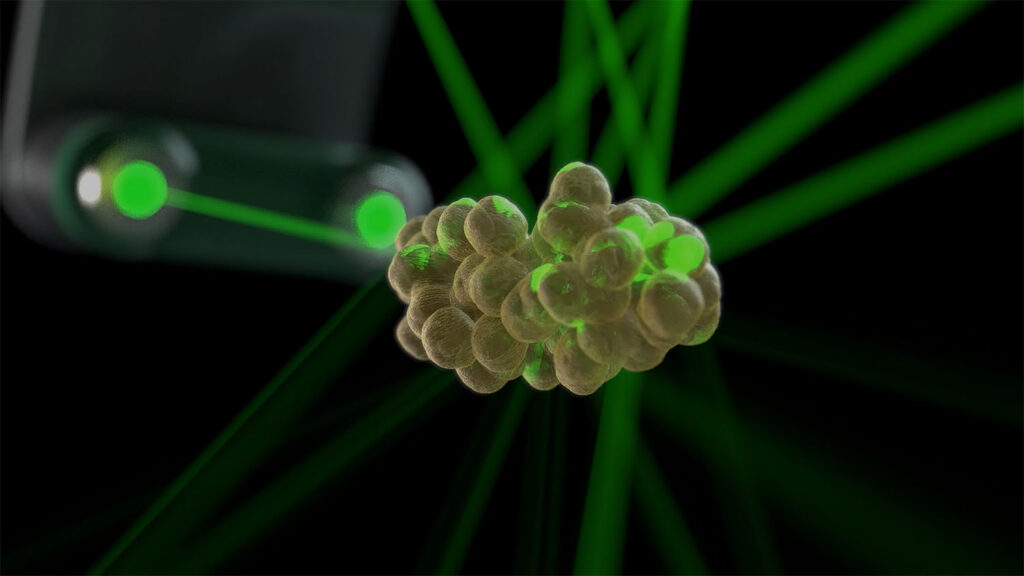
What is Emerald Laser Technology? Emerald Laser Technology refers to a type of laser treatment used for various purposes, including fat reduction and skin tightening. It typically utilizes specific wavelengths of light to target adipose tissue (fat cells) and stimulate collagen production in the skin. How Emerald Laser Works for Weight Loss Emerald Laser works for weight loss by penetrating the skin and targeting fat cells. The laser energy disrupts the fat cell membranes, causing them to release their contents, which are then metabolized and eliminated by the body’s natural processes. This can result in a reduction in fat volume in the treated area. Does Emerald Laser Tighten Skin? Yes, Emerald Laser treatment can also tighten the skin. Along with targeting fat cells, the laser energy stimulates collagen production in the skin, leading to increased skin elasticity and firmness. This can help improve the appearance of sagging or loose skin in the treated area. Emerald Laser vs. Traditional Methods Emerald Laser technology offers several advantages over traditional weight loss methods such as dieting and exercise alone. It can provide targeted fat reduction and skin tightening with minimal discomfort and downtime compared to surgical procedures like liposuction. How to Prepare for Emerald Laser Treatment Before undergoing Emerald Laser treatment, it’s essential to consult with a qualified practitioner who can assess your eligibility and provide personalized recommendations. Preparation may involve avoiding certain medications or skincare products and following any pre-treatment instructions provided by the practitioner. Average Cost of Emerald Laser Technology The cost of Emerald Laser treatment can vary depending on factors such as the treatment area, the number of sessions required, and the provider’s location and expertise. On average, the cost per session typically ranges from a few hundred to several thousand dollars. Unlocking Your Fat Loss Journey with Emerald Laser Emerald Laser technology can be a valuable tool in achieving your fat loss goals, especially when combined with a healthy diet and regular exercise. By targeting stubborn fat deposits and improving skin tone, Emerald Laser treatment can help you achieve a more sculpted and toned physique.
Smoothing Out Smile Lines: Your Comprehensive Guide
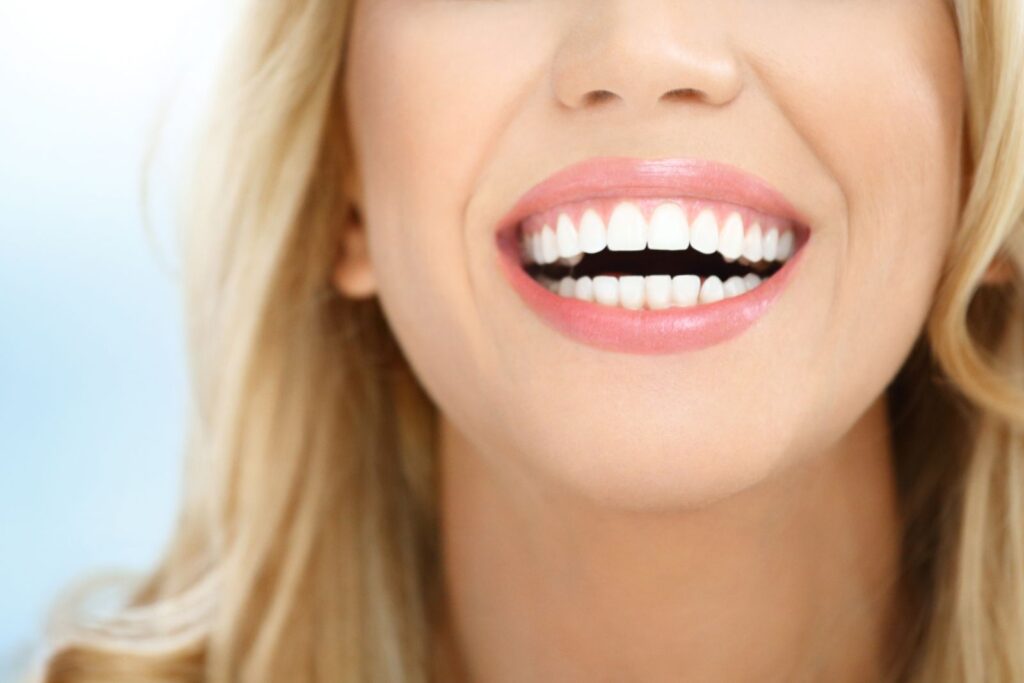
Smoothing Out Smile Lines: Your Comprehensive Guide Smile lines, also known as laugh lines or nasolabial folds, are a natural part of aging, resulting from repetitive facial expressions coupled with a decrease in skin elasticity, volume, and collagen production. Fortunately, advancements in cosmetic treatments offer effective solutions to reduce their appearance, providing a range of options from non-invasive skincare routines to more intensive procedures. Understanding Smile Lines Formation: Smile lines develop from repeated facial movements, influenced by lifestyle choices and environmental factors like sun damage and smoking. Collagen and elastin, essential for skin structure and elasticity, decrease with age, contributing to the formation of these lines. Smoothing Out Smile Lines: Your Comprehensive Guide Smile lines, also known as laugh lines or nasolabial folds, are a natural part of aging, resulting from repetitive facial expressions coupled with a decrease in skin elasticity, volume, and collagen production. Fortunately, advancements in cosmetic treatments offer effective solutions to reduce their appearance, providing a range of options from non-invasive skincare routines to more intensive procedures. Understanding Smile Lines Formation: Smile lines develop from repeated facial movements, influenced by lifestyle choices and environmental factors like sun damage and smoking. Collagen and elastin, essential for skin structure and elasticity, decrease with age, contributing to the formation of these lines. Cosmetic Treatments Overview: From dermal fillers to facelifts, various procedures address smile lines by restoring skin texture and volume while boosting collagen production and skin elasticity. Tailored Treatment Plans at Newest Beginnings Medespa: Newest Beginnings MedSpa offers personalized treatment plans tailored to different skin types and concerns, utilizing advanced techniques for effective results. Non-Invasive Treatments: Dermal fillers, Botox, and laser therapies provide transformative results with minimal downtime. Dermal fillers, primarily composed of hyaluronic acid, add volume beneath the skin, reducing deep creases. Botox temporarily paralyzes muscles, diminishing dynamic wrinkles, while laser treatments stimulate collagen production for improved skin texture. Minimally Invasive Options: Microneedling and thread lifts offer significant improvements with minimal downtime. Microneedling boosts collagen and elastin production by creating micro-injuries, and enhancing skin texture. Thread lifts use absorbable sutures to lift facial tissue, stimulating collagen production and reducing smile lines’ visibility. Advanced Procedures: For severe smile lines and sagging skin, facelifts and fat grafting provide lasting results by removing excess skin and restoring volume. Choosing the Right Path: Facelifts and fat grafting require a thorough consultation with a board-certified plastic surgeon to determine the best approach based on facial anatomy and aesthetic goals. Discover Timeless Beauty at Newest Beginnings Medespa: Our clinic offers advanced, personalized treatments to rejuvenate your skin and enhance your natural beauty. With cutting-edge techniques and expert specialists, we tailor every treatment to your unique needs, unveiling your eternal glow and transforming smile lines into a radiant testament to your inner vitality.
Flexible Spending Health Savings Account
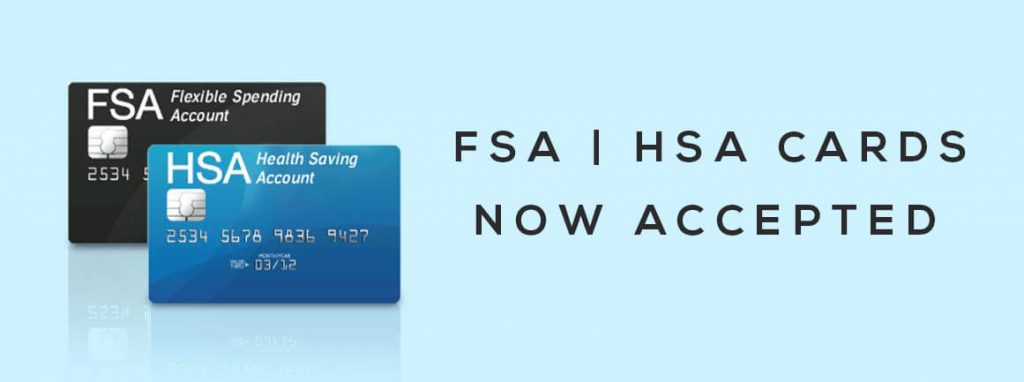
Newest Beginnings Med Spa, with locations in Jersey City and Old Bridge, New Jersey, and soon to open in Lake Worth, Florida, offers a range of approved services eligible for FSA or HSA programs, including weight loss services. From rejuvenating facials and advanced skin treatments to holistic health services, our spa provides comprehensive care tailored to your needs. With convenient receipt and billing options, you can maximize your pre-tax dollars for these services. Join us in our tranquil environment to experience the benefits of our offerings. Whether you’re in Jersey City, Old Bridge, or awaiting our arrival in Lake Worth, we’re here to be your trusted destination for health, wellness, and weight loss support. WHAT IS A FLEXIBLE SPENDING ACCOUNT – FSA? At Newest Beginnings Med Spa, a Flexible Spending Account (FSA) presents a convenient option for covering various out-of-pocket healthcare expenses while enjoying tax advantages. By contributing to your FSA, you can allocate the funds towards qualified medical costs, free from taxation, potentially leading to savings. We gladly accept FSA Credit Cards for eligible services at Newest Beginnings Med Spa (excluding gratuities). Detailed receipts containing billing codes for insurance purposes are provided, ensuring you possess the necessary documentation for FSA claims. Simply notify us during your visit if you plan to utilize your FSA Card, and we’ll assist you in obtaining the required receipts with CPT Codes for your records. Please note that FSA funds cannot be applied to gratuities. If you have specific questions regarding the utilization of your FSA, we recommend consulting your employer or FSA administrator for guidance on the claims process and eligible expenses. WHAT IS A HEALTH SAVINGS ACCOUNT – HSA? At Newest Beginnings Med Spa, a Health Savings Account (HSA) serves as a valuable tool for individuals enrolled in a High Deductible Health Plan (HDHP). To qualify, the HDHP typically requires a minimum deductible of $1,600 for individuals or $3,200 for families. When exploring health plans in the Marketplace, it’s important to determine if they are “HSA-eligible.” In 2024, contribution limits for HSAs are set at up to $4,150 for self-only HDHP coverage and up to $8,300 for family HDHP coverage. Contributions to an HSA can carry over from year to year, and the account may accrue interest, which is not subject to taxation. If you possess an HSA, you can utilize your HSA Card at Newest Beginnings Med Spa for eligible services. We will furnish you with detailed receipts, including CPT Codes for your records. It’s crucial to remember that HSA funds cannot be used for gratuities; they are reserved solely for qualified healthcare services. If your health insurance provider offers HSAs or if you have the option to open one through a bank or financial institution, consider leveraging this account to cover healthcare expenses while potentially benefiting from tax advantages. These codes can be used for billing and insurance purposes, providing a clear understanding of the services offered at Newest Beginnings Med Spa. You can use FSA or HSA cards for any and all services offered at Newest Beginnings Med Spa. Call us to schedule your appointment today!
Uncover Dysport’s top 10 uses for laugh lines and more!
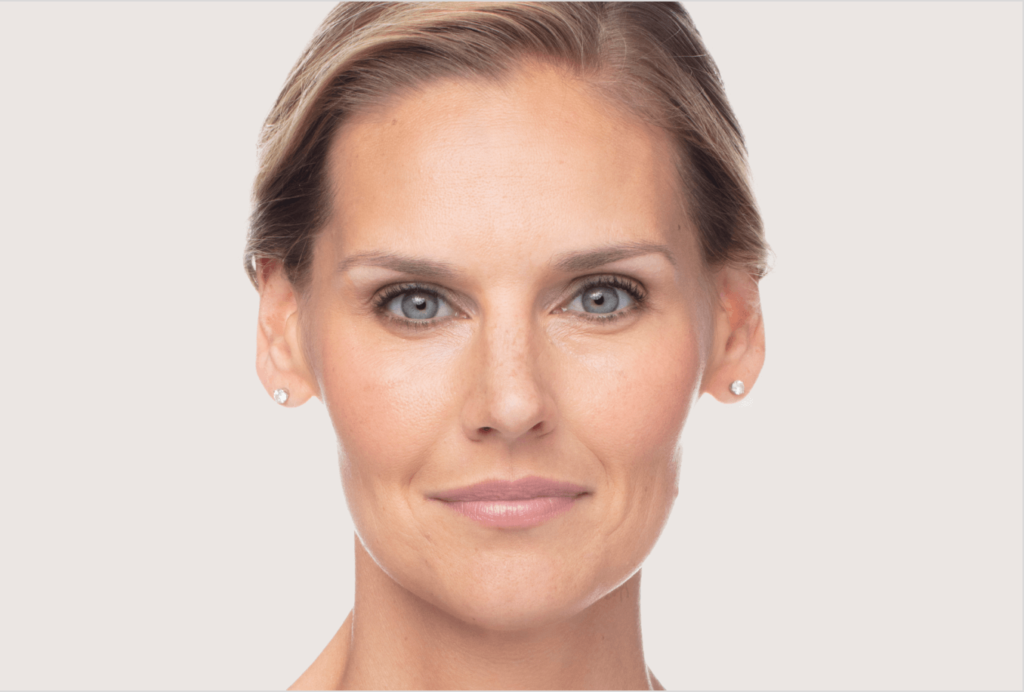
Introduction Laugh lines, though a testament to a life filled with joy, can sometimes leave us feeling less confident about our appearance. Fortunately, with advancements in cosmetic procedures, there are effective ways to diminish these lines and restore a more youthful look. One such solution gaining popularity is Dysport, a botulinum toxin type A injection known for its wrinkle-smoothing effects. In this comprehensive guide, we’ll delve into the top 10 uses of Dysport and how it can help you bid farewell to laugh lines. Understanding Dysport: A Brief Overview Before we explore its various applications, let’s grasp the fundamentals of Dysport. Similar to Botox, Dysport is an FDA-approved injectable treatment primarily used to reduce the appearance of wrinkles and fine lines by temporarily paralyzing targeted facial muscles. It contains abobotulinumtoxinA, a neurotoxin that inhibits muscle contractions, thereby softening wrinkles and preventing new ones from forming. Unveiling the Top 10 Uses of Dysport Let’s embark on a journey through the diverse applications of Dysport and how it can transform your appearance for the better: 1. Smoothing Laugh Lines Laugh lines, also known as nasolabial folds, are the creases that extend from the sides of your nose to the corners of your mouth. Dysport injections can effectively soften these lines, giving your face a smoother, more youthful appearance. 2. Diminishing Forehead Wrinkles Forehead wrinkles, often caused by repeated facial expressions and aging, can be a source of self-consciousness for many individuals. Dysport targets the underlying muscles, reducing the depth and visibility of forehead lines. 3. Erasing Crow’s Feet Crow’s feet, the fine lines that radiate from the corners of the eyes, can betray our age and make us appear tired or stressed. Dysport injections delicately smooth these lines, restoring a refreshed and rejuvenated look. 4. Lifting Eyebrows As we age, the brows may droop, contributing to a tired or aged appearance. Dysport can be strategically injected to lift the brows, opening up the eyes and creating a more youthful, alert expression. 5. Softening Marionette Lines Marionette lines, named after the strings used to manipulate puppets, are the vertical lines that extend from the corners of the mouth to the chin. Dysport injections can soften these lines, rejuvenating the lower face. 6. Minimizing Neck Bands Neck bands, also known as platysmal bands, are vertical lines that form on the neck due to aging and muscle laxity. Dysport injections can relax the underlying muscles, reducing the prominence of these bands for a smoother neck contour. 7. Contouring Jawline A well-defined jawline is a hallmark of youth and vitality. Dysport can be used to relax the muscles responsible for jaw clenching, thereby slimming the jawline and achieving a more sculpted appearance. 8. Treating Excessive Sweating Beyond its cosmetic applications, Dysport is also FDA-approved for treating hyperhidrosis, or excessive sweating. By blocking the nerve signals that stimulate sweat glands, Dysport can significantly reduce underarm sweating, boosting confidence and comfort. 9. Managing Migraine Headaches In addition to its cosmetic benefits, Dysport has been found to be effective in alleviating chronic migraine headaches. When injected into specific head and neck muscles, Dysport can reduce the frequency and severity of migraines, providing much-needed relief for sufferers. 10. Addressing Muscle Spasms Dysport is used therapeutically to treat various muscle spasticity disorders, such as cervical dystonia (spasmodic torticollis) and upper limb spasticity. By relaxing overactive muscles, Dysport injections can improve range of motion and quality of life for individuals with these conditions. Frequently Asked Questions (FAQs) How long does Dysport last? Dysport typically lasts for three to four months, though individual results may vary. Are Dysport injections painful? Discomfort during Dysport injections is minimal and brief, as a topical anesthetic is often applied beforehand. When will I see results after Dysport treatment? Most individuals begin to notice improvements within a few days, with full results becoming apparent within two weeks. Are there any side effects of Dysport? Side effects of Dysport are usually mild and temporary, including bruising, swelling, and mild headache. Can Dysport be combined with other cosmetic treatments? Yes, Dysport can be combined with dermal fillers and other cosmetic procedures for comprehensive facial rejuvenation. Is Dysport suitable for everyone? While Dysport is generally safe for most individuals, it may not be suitable for pregnant or breastfeeding women or those with certain neuromuscular disorders. Frequently Asked Questions (FAQs) How long does Dysport last? Dysport typically lasts for three to four months, though individual results may vary. Are Dysport injections painful? Discomfort during Dysport injections is minimal and brief, as a topical anesthetic is often applied beforehand. When will I see the results after Dysport treatment? Most individuals begin to notice improvements within a few days, with full results becoming apparent within two weeks. Are there any side effects of Dysport? Side effects of Dysport are usually mild and temporary, including bruising, swelling, and mild headache. Can Dysport be combined with other cosmetic treatments? Yes, Dysport can be combined with dermal fillers and other cosmetic procedures for comprehensive facial rejuvenation. Is Dysport suitable for everyone? While Dysport is generally safe for most individuals, it may not be suitable for pregnant or breastfeeding women or those with certain neuromuscular disorders. How can I make an appointment? To schedule a Dysport appointment, visit Newest Beginnings website and follow the instructions for booking online or contact their office directly.
Harness Clearer Skin with Red Light Therapy – Expert Guide
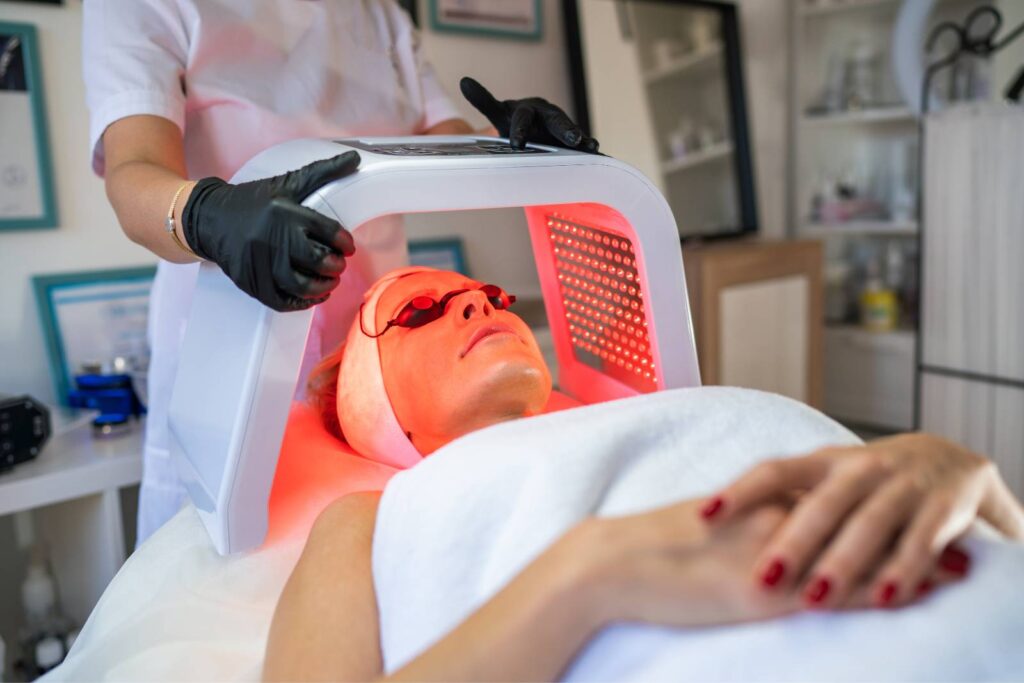
Harness Clearer Skin with Red Light Therapy – Expert Guide Acne continues to be a prevalent and persistent concern, impacting individuals of all ages and skin types. According to the American Academy of Dermatology Association, acne ranks as the most prevalent skin condition in the United States, affecting over 50 million Americans annually. This widespread skin issue manifests in various forms, ranging from mild-to-moderate acne characterized by occasional breakouts to severe, inflammatory acne that can cause significant discomfort and result in lasting skin damage and scarring. In recent years, the skincare industry has witnessed a groundbreaking development in the form of red light therapy. This non-invasive treatment utilizes specific wavelengths of light, particularly red and infrared light, to address a wide range of skin concerns, including acne. The objective of this article is to delve into the scientific basis of red light therapy for acne and its increasing recognition as a revolutionary approach in skincare. We will explore the mechanisms, advantages, and effectiveness of red light therapy in comparison to traditional acne treatments, such as topical creams and medications. Additionally, we will provide guidance on what to expect during a red light therapy session and emphasize the importance of selecting the appropriate medical spa for this treatment. The Science Behind Red Light Therapy The science behind red light therapy lies in its ability to stimulate cellular processes within the body through exposure to specific wavelengths of red light. This therapy, also known as low-level laser therapy (LLLT) or photobiomodulation, has been extensively studied for its therapeutic effects on various conditions, including skin issues like acne, wound healing, pain management, and more. Red light therapy works by penetrating the skin’s layers and interacting with cells to promote various beneficial responses: Increased ATP Production: Red light stimulates the mitochondria, the energy powerhouses of cells, to produce more adenosine triphosphate (ATP). This increase in ATP fuels cellular activities and enhances their ability to function optimally. Improved Blood Circulation: Red light therapy can dilate blood vessels and improve blood flow, which helps deliver oxygen and nutrients to tissues while removing waste products more efficiently. This enhanced circulation aids in tissue repair and regeneration. Reduction of Inflammation: Red light therapy has anti-inflammatory effects, helping to mitigate swelling, redness, and pain associated with inflammatory conditions. By modulating cytokine levels and reducing oxidative stress, red light therapy helps to calm inflammation within tissues. Stimulation of Collagen Production: Collagen is a crucial protein responsible for maintaining skin structure and elasticity. Red light therapy stimulates fibroblasts, the cells responsible for collagen production, leading to an increase in collagen synthesis. This helps to improve skin tone, texture, and elasticity while reducing the appearance of wrinkles and fine lines. Antimicrobial Properties: Red light therapy has been shown to exhibit antimicrobial effects, particularly against bacteria such as Propionibacterium acnes (P. acnes), which contribute to acne formation. By targeting and destroying acne-causing bacteria, red light therapy can help alleviate acne symptoms and promote clearer skin. Overall, the science behind red light therapy underscores its potential as a non-invasive, safe, and effective treatment for various conditions, including acne. Its ability to modulate cellular processes, reduce inflammation, promote healing, and enhance skin health makes it a valuable tool in skincare and overall wellness. However, individual responses to red light therapy may vary, and it’s essential to consult with a healthcare professional before starting any new treatment regimen. What Are the Benefits of Red Light Therapy for Acne-Prone Skin? Reduced Inflammation: Red light therapy helps to diminish inflammation associated with acne breakouts, soothing redness and swelling. Killing Acne-Causing Bacteria: It targets and destroys acne-causing bacteria, particularly Propionibacterium acnes (P. acnes), helping to prevent future breakouts. Promotion of Healing: By stimulating cellular repair processes, red light therapy accelerates the healing of acne lesions, reducing the risk of scarring. Improved Skin Tone and Texture: With consistent use, red light therapy can enhance overall skin tone and texture, leaving the complexion smoother and more even. Non-Invasive and Gentle: Unlike some acne treatments that can be harsh on the skin, red light therapy is non-invasive and gentle, making it suitable for all skin types, including sensitive skin. Minimal Side Effects: It typically has minimal side effects, such as temporary redness or warmth in the treated area, which usually subside shortly after the session. Complementary to Other Treatments: Red light therapy can be used in conjunction with other acne treatments, such as topical medications or oral medications, to enhance results and speed up the healing process. Red Light Therapy vs. Traditional Treatments Non-Invasive: Unlike many traditional treatments such as chemical peels or laser resurfacing, red light therapy is non-invasive. It doesn’t damage the skin’s surface, making it a gentler option for sensitive skin. Minimal Side Effects: Traditional treatments like topical retinoids or oral medications can often cause side effects such as dryness, irritation, or gastrointestinal issues. Red light therapy typically has minimal side effects, with temporary redness or warmth being the most common, which usually subside quickly. No Downtime: Many traditional treatments require downtime for recovery, especially more aggressive options like laser therapy or chemical peels. With red light therapy, there’s no downtime needed, allowing individuals to resume their normal activities immediately after treatment. Suitable for All Skin Types: Some traditional treatments may not be suitable for certain skin types or conditions. Red light therapy, however, is safe for all skin types, including sensitive skin, and can be used by individuals of any age. Long-Term Results: While traditional treatments may provide temporary relief from acne symptoms, red light therapy can offer long-term benefits with regular sessions. It helps address the root causes of acne, promoting clearer, healthier skin over time. Complementary Treatment: Red light therapy can be used in conjunction with traditional treatments for enhanced results. It can help speed up the healing process and minimize side effects associated with other acne treatments. Overall, red light therapy presents a promising alternative to traditional acne treatments, offering effective results with minimal risk and downtime. What to Expect
Enhancing Wellness with Ed: A Comprehensive Guide
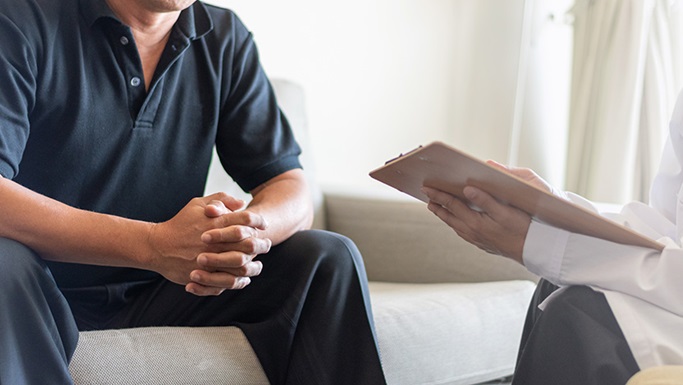
Discover effective strategies and tips to optimize your well-being in today’s fast-paced world. In today’s fast-paced world, wellness has become more than just a trend; it’s a way of life. Individuals are increasingly seeking ways to optimize their health and well-being, and one avenue gaining traction is through Ed wellness. In this comprehensive guide, we delve into the depths of Ed wellness and explore how it can enhance your overall well-being. Understanding Ed Wellness Ed wellness encompasses a holistic approach to well-being that focuses on physical, mental, and emotional health through the integration of education and wellness practices. It emphasizes the importance of continuous learning and personal growth in achieving optimal health and happiness. The Role of Education Education serves as the cornerstone of Ed wellness. It empowers individuals with the knowledge and skills necessary to make informed decisions about their health and lifestyle choices. Whether it’s understanding nutrition, exercise, or stress management, education plays a vital role in fostering health literacy and empowering individuals to take control of their well-being. Holistic Approach to Wellness Unlike traditional approaches to health, which often focus solely on physical aspects, Ed wellness takes a holistic approach. It acknowledges the interconnectedness of the mind, body, and spirit and emphasizes the importance of addressing mental and emotional health alongside physical well-being. By nurturing all facets of wellness, individuals can achieve a greater sense of balance and fulfillment in their lives. Implementing Ed Wellness Practices Incorporating Ed wellness practices into your daily routine can have profound effects on your overall well-being. Here are some key strategies to consider: 1. Lifelong Learning Embrace lifelong learning as a core principle of Ed wellness. Explore new topics, acquire new skills, and challenge yourself to grow intellectually. Whether it’s through formal education, online courses, or self-directed learning, prioritize knowledge acquisition as a pathway to personal development. 2. Mindful Movement Engage in physical activity that not only benefits your body but also nurtures your mind and spirit. Whether it’s yoga, Tai Chi, or meditative walks, choose activities that promote mindful movement and mind-body connection. Focus on breath awareness and somatic sensations to cultivate presence and awareness during exercise. 3. Nourishing Nutrition Fuel your body with nutrient-dense foods that support optimal health and vitality. Emphasize a plant-based diet rich in fruits, vegetables, whole grains, and healthy fats. Prioritize quality over quantity and savor each bite mindfully. Pay attention to how different foods make you feel and adjust your diet accordingly to support your well-being. 4. Emotional Intelligence Develop emotional intelligence skills to navigate life’s ups and downs with grace and resilience. Practice self-awareness, self-regulation, empathy, and social skills to cultivate healthy relationships and emotional well-being. Prioritize self-care activities that nurture your emotional health and support your overall well-being. Conclusion In conclusion, Ed wellness offers a holistic approach to health and well-being that integrates education and wellness practices. By prioritizing continuous learning, mindful movement, nourishing nutrition, and emotional intelligence, individuals can enhance their overall well-being and live more fulfilled lives. Embrace the journey of self-discovery and personal growth, and let Ed wellness be your guide to a healthier, happier life.

